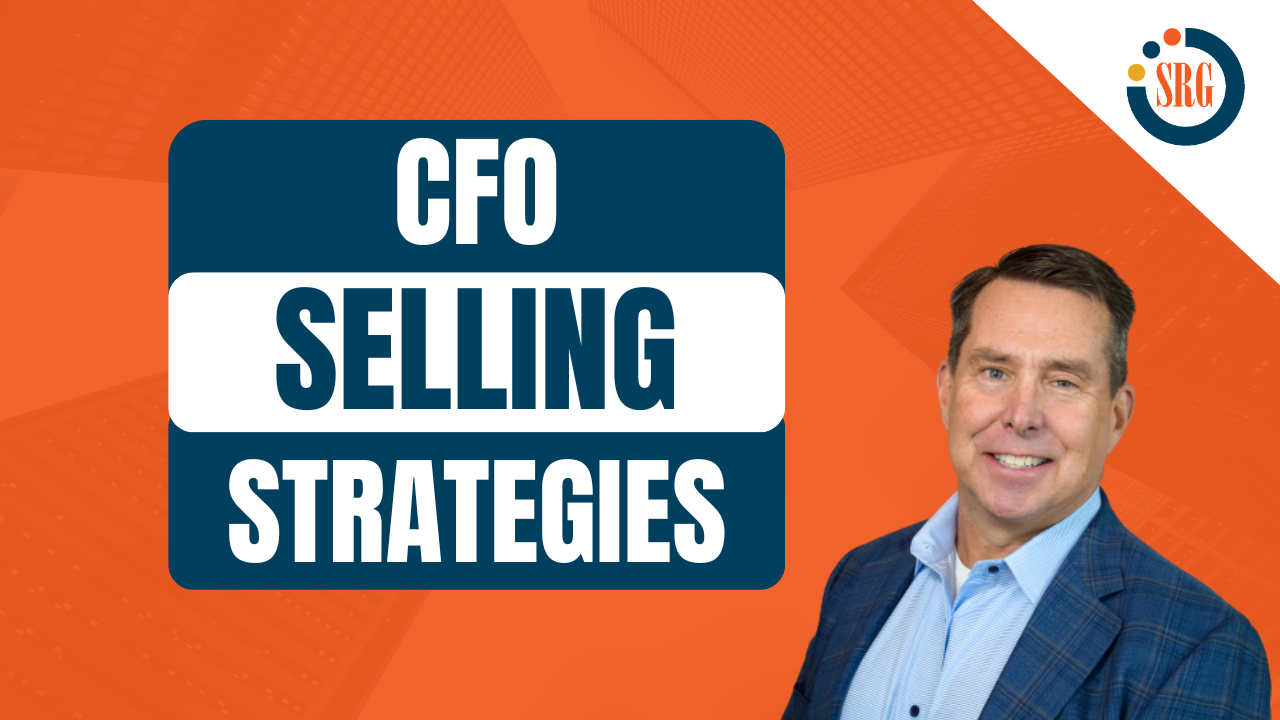3 Strategies for Selling to the CFO During an Economic Slowdown


Do you want to avoid today's reduced budgets and CFO roadblocks to close more deals?
Selling to CFOs (Chief Financial Officers) is much more important now since they have become the key decision-maker in just about every B2B deal. Tightening budgets mean that the CFO review threshold has gone down significantly, and even smaller purchases may require their approval.
Typically, the CFO was involved in very large purchases but now it’s come down to the $50,000 level or even lower in smaller organizations. That’s why every sales rep needs to anticipate CFO involvement and actively engage the CFO with a compelling business case that ultimately gets the proposal approved.
Here are three strategies to help you successfully win CFO approval.
#1: Understand the CFO's Mindset
All key executives operate at a strategic level. They are concerned with solving top business problems, especially the challenges of competitive threats, industry changes, or emerging technology. More specifically, the CFO is concerned with the bottom line. If your solution reduces expenses or allows them to scale without adding overhead—this will get the CFO’s attention.
Conducting research provides more insight into your prospective CFO’s mindset. The goal of your research is to understand their priorities, pain points, and decision-making processes. The best way to do this is by reading financial reports, press releases, and industry news to gather insights into the company's financial performance, challenges, and strategic goals. This information can help you tailor your sales pitch to the CFO's specific needs and position your product or service as a valuable solution to their challenges.
#2: Reframe Your Sales Pitch
Successful CFO selling starts with speaking the same language. Show the value of your product or service through a financial lens by focusing on capital versus operating expense, return on investment, and cost of capital examples. To further position your value and credibility, avoid ambiguous numbers, intangible benefits, or longer-term scenarios.
When discussing ROI include a specific timeframe for that return. Your proposal needs to demonstrate a return on investment along with a detailed breakdown of costs and a specific plan for how the investment will generate value. This could be showing how your product or service will increase productivity, reduce costs, or improve the top line, while also demonstrating how it will generate more revenue than the cost of the proposal. Be prepared to address the CFO’s potential objections and questions regarding your assumptions.
Compliment the ROI discussion by weighing the cost of inaction, or COI. While addressing inefficiencies or poor productivity may require an investment, failing to do so also comes at a cost to the organization. This can include losses due to turnover, missed sales targets, and other inefficiencies. By calculating the COI and presenting a comprehensive case you can make it clear that action is necessary, and the potential losses from inaction make a more compelling argument in your favor.
Finally, make a clear link between your initiative and the company's strategic objectives. If your proposal feels like a pet project or luxury item, the CFO will be quick to dismiss it. Positioning your proposal as a strategic investment that clearly aligns with the CEO's and the board's priorities can help win over the CFO.
#3 Ensure a Productive Meeting
Meeting with the CFO early in the sales process is ideal but often, especially in large organizations, that's not possible. Start by planting the seed and working with your key sponsor on the value of being part of the CFO conversation to secure a meeting. In the meantime, work to learn more about the CFO’s persona. Ask questions to learn what they care about, how they communicate, and how they prefer to consume information.
When doing your research be sure to investigate the CFO's background and career history to gain insights into their professional interests and expertise. This can help you establish common ground and build rapport when you do meet.
Anticipate a fairly analytical discussion. The CFO wants to see the numbers and the details behind your assumptions. Typically, the CFO conversation will be a direct and matter-of-fact communication style. This makes it imperative that you prepare a thoughtful analysis without any fluff, embellishment, or long-winded stories. Be respectful of the CFO’s time and get to the point quickly as top executives tend to cut the conversation short if it’s not a valuable use of their time.
Be very clear about the problem you’re solving, how your solution addresses that problem, and why your solution is the most cost-effective way to solve it.
To Sum It Up
Selling to the CFO has always been challenging, but today winning their approval is even more critical to closing the deal, even with smaller sales. Gaining the CFO’s support can also open the door to more future opportunities.
Effectively communicating the value and financial benefits of your product or service to a CFO is critical. Start by doing your research on the industry and organization and reframe your pitch to speak the CFO’s language. Remember, the key to success when selling to the CFO is to be specific and crunch the numbers to show exactly how your solution helps the bottom line and is a wise investment for the company.
Use these three strategies to help you have more successful CFO meetings.
At SRG, we know the importance of engaging key executives early in the sales process and speaking the C-Suite language. If you want your sales team to successfully sell higher, discover how SRG's Selling to Key Executives™ program can help.